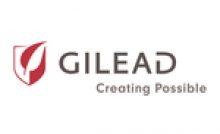Indonesia Fusion Splicer Markets, Competition, Forecast & Opportunities, 2022-2027 – Focus on Field Splicing, Factory Splicing, and Laboratory Splicing – ResearchAndMarkets.com


DUBLIN–(BUSINESS WIRE)–The “Indonesia Fusion Splicer Market, By Type (Field Splicing, Factory Splicing, and Laboratory Splicing), By Component (Hardware, Software, Service), By Alignment Type, By Application, By Region, Competition Forecast & Opportunities, 2027” report has been added to ResearchAndMarkets.com’s offering.
The Indonesia fusion splicer market is anticipated to witness steady CAGR in the forecast period, 2023-2027
Ongoing advancements in the telecommunication industry and a surge in adoption of advanced technologies like cloud-based infrastructure primarily drive the demand for Indonesia’s fusion splicer market.
The convergence of voice, video, data networks, and high fiber to the home deployments has increased the number of optical fibers being fusion spliced. High demand from several end-user industries, including energy and power, telecommunication, aerospace, and defense, medical, are further expected to contribute to the Indonesia fusion splicer market growth.
Advantages of Fusion Splicing Drives the Market Growth
There are two types of fusion splicing: mechanical splicing and fusion splicing. In mechanical splicing, two ends of the optic fiber are held end to end inside a sleeve, and the fibers are not permanently joined; they are just accurately held together. While in fusion splicing, two fibers are fused or welded together by using an electric arc.
Fusion splicing is the preferred method over mechanical splicing as it is able to provide a reliable joint with low insertion loss. This technique is generally used on single-mode fibers, but in some cases, it can be used for multi-mode fibers. Fusion splicing offers lower insertion loss and provides better performance, which minimizes the overall link performance.
They can provide a lower variable cost per fusion splice than the other splicing method. By using the fusion splicing technique, engineers can provide a secure and better environment that ensures there are minimum cable failures and weak signals. Fusion splicing provides the lowest back reflection, and the structure is very compact and neat.
Fusion splicing can withstand high temperatures and restricts the path of dust and other contaminants from entering the optical path. The benefits of using the fusion splicing technique are expected to boost Indonesia’s fusion splicing market growth over the next five years.
Growing Telecommunication Industry Supports the Market Growth
Indonesia’s telecommunication industry is the fastest developing country in the Asia-pacific region. The young population of Indonesia is the largest subscriber of high-speed internet connections in the country. The country is starting from a relatively low level of IT solutions adoption, allowing sufficient room for the Indonesia fusion splicer market growth.
There is high potential for information and communication technology in the upcoming years. The government is supporting the growth of the ICT sector by encouraging the adoption of digitalization in the public and private sectors and releasing policies and plans.
Indonesia’s five-year national medium-term development plan has identified a number of ICT-related strategic programs to support digital transformation, science and technology parks, and industry 4.0 in five priority sub-sectors, including food and beverage, automotive, electronics, apparel, pharmaceuticals, and chemicals.
The rise in public internet usage and rapid adoption of higher bandwidth services and applications are expected to boost the network bandwidth. Also, the emergence of advanced mobile communication 4G and 5G technologies and the use of smart technologies in each industrial and commercial sector is expected to propel the Indonesia fusion splicer market growth over the next five years.
To analyze the market based on the region, the Indonesia fusion splicer market is studied in major regions namely Java, Sumatra, Kalimantan, Sulawesi, Bali and Nusa Tenggara, Maluku, and Papua.
Competitive Landscape
Company Profiles: Detailed analysis of the major companies present in Indonesia fusion splicer market.
- Sumitomo Electric Industries, Ltd.
- Furukawa Electric Co., Ltd.
- Fujikura Ltd.
- Ilsintech Co., Ltd.
- INNO Instruments, Inc.
- Darkhorsechina (Beijing) Telecom. Tech. Co., Ltd.
- China Electronics Technology Group Corporation
- Nanjing Jilong Optical Communication Co., Ltd.
- Nanjing DVP O.E. Tech. Co., Ltd.
- Shenzhen Ruiyan Communication Equipment Co., Ltd.
Report Scope:
In this report, Indonesia fusion splicer market has been segmented into following categories, in addition to the industry trends which have also been detailed below:
Indonesia Fusion Splicer Market, By Type:
- Field Splicing
- Factory Splicing
- Laboratory Splicing
Indonesia Fusion Splicer Market, By Component:
- Hardware
- Software
- Service
Indonesia Fusion Splicer Market, By Alignment Type:
- Cladding Alignment
- Core Alignment
Indonesia Fusion Splicer Market, By Application:
- Telecommunication
- Aerospace & Defense
- Cable TV
- Enterprise
- Others
Indonesia Fusion Splicer Market, By Region:
- Java
- Sumatra
- Kalimantan
- Sulawesi
- Bali and Nusa Tenggara
- Maluku and Papua
For more information about this report visit https://www.researchandmarkets.com/r/qtcaja
About ResearchAndMarkets.com
ResearchAndMarkets.com is the world’s leading source for international market research reports and market data. We provide you with the latest data on international and regional markets, key industries, the top companies, new products and the latest trends.
Contacts
ResearchAndMarkets.com
Laura Wood, Senior Press Manager
press@researchandmarkets.com
For E.S.T Office Hours Call 1-917-300-0470
For U.S./ CAN Toll Free Call 1-800-526-8630
For GMT Office Hours Call +353-1-416-8900
Recent Posts
Zindi Supports Cassava Technologies with 85 K Zindians to showcase African AI innovation
DUBAI, UAE – Media OutReach Newswire - 5 May 2025 - Zindi, the leading professional…
Co-Axis Secures S$1.25 Million in Catalytic Capital to Scale Climate and Health Solutions in Asia
SINGAPORE - Media OutReach Newswire - 5 May 2025 - Co-Axis, a digital impact marketplace…
New Report Calls for Collective Action to Combat Asia’s Growing Antimicrobial Resistance Threat
The Centre for Impact Investing and Practices and the World Economic Forum's GAEA (Giving to…
Philanthropy Asia Alliance Launches Two New Communities to Tackle Health Challenges and Accelerate Asia’s Just Energy Transition
The Health for Human Potential Community will address maternal and child health as well as…
Geniushub Launches 1-Hour Marketing Consultation to Help Hong Kong SMEs Seize Digital Opportunities
HONG KONG SAR - Media OutReach Newswire – 5 May 2025 - As artificial intelligence…
TUMI Celebrates The New 19 Degree Lite Collection With Campaign Starring Global Ambassador, Lando Norris
HO CHI MINH, VIETNAM - Media OutReach Newswire - 5 May 2025 - Today, international…
